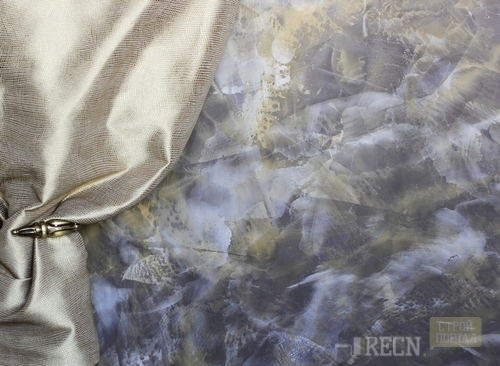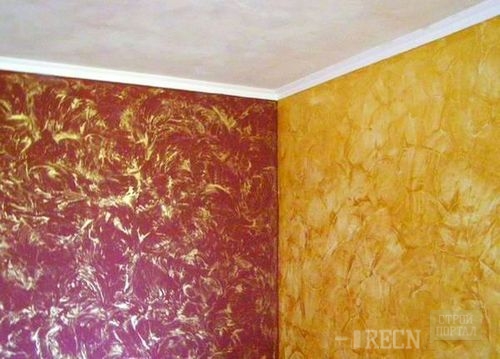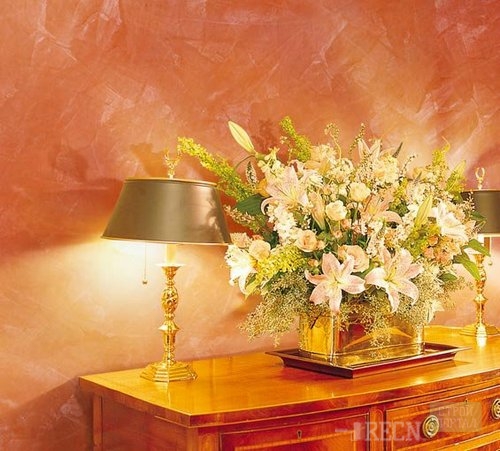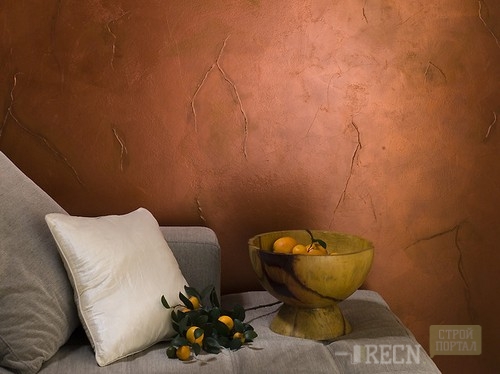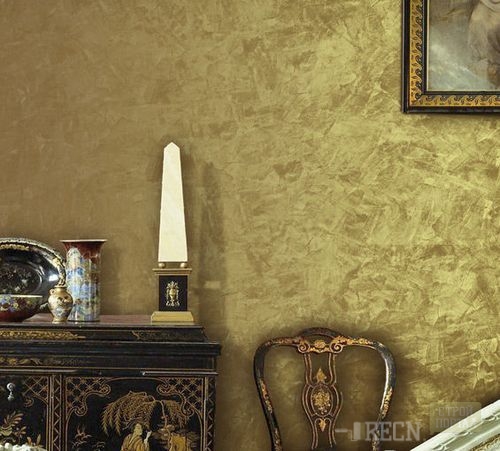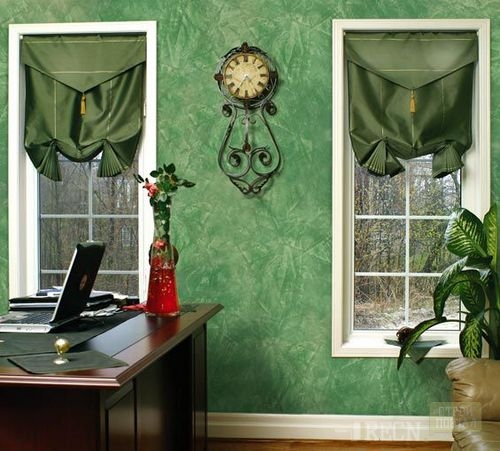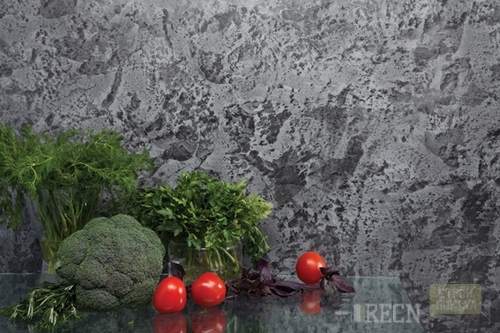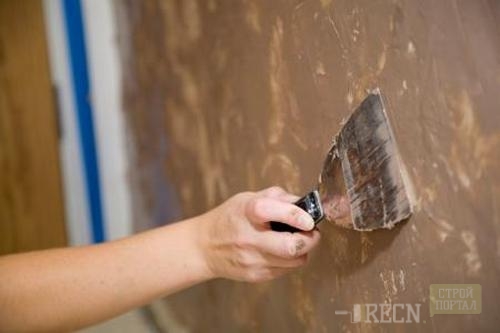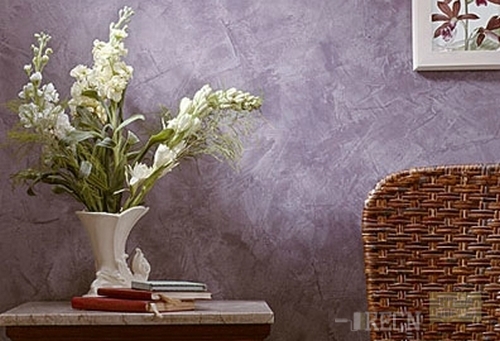
Venetian plaster - application technology. Master Class Walls
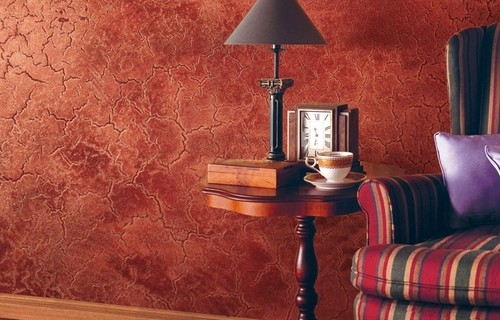
Venetian decorative plaster - Queen of the interior. The ability of this transparent finishing material "Play" on the surfaces of the light of the light can not reproduce the finishes.
Content
Composition of Venetian plaster
The basic composition of Venetian includes:
- dust that is formed during the processing of stone (granite, marble, quartz);
- baby (necessarily from the same stone as dust);
- binding substance;
- dyes.
Most of all is valued by the natural Venetian plaster - the one on the basis of hated lime. This substance was added to its composition builders of the Renaissance. The technology of preparation of modern material has changed somewhat: natural binders were replaced with artificial (acrylic in particular).
Characteristics of Venetian plaster
- Environmentally friendly and absolutely non-toxic composition of the material (especially if Venetsian is natural) makes plaster by frequent guest on the walls of children's bedrooms and medical institutions.
- Venetian - finishing "for century". It serves a long time with dignity - about 20 years. Color and shine remain unchanged. Over time, the material has a property becomes stronger. In the layers of Venetianks, due to the ability of plaster absorbing carbon from the environment, carbonization occurs. On the surface of the finish, a strong carbon film is formed, which makes the wall cover extremely resistant.
- Venetian plaster is unusually durable: it "feels" itself both at -50 ° C and at + 80 ° C.
- The colors and textures of the material affect even the most demanding taste. Venetian can be a modest and restrained background in the room, and maybe their extravagance and noble chic make the main accent of the interior.
- The stucco material is not additive: to care for such a coating is easier than simple. Dry or semi-discharge cleaning, wet cleaning with the addition of soap if necessary - all means are good.
- The coating passes the pairs and does not let water, protecting the walls from the fungus.
- Venetian is a unique decor element, as it is applied to the surface solely manually. Each individual work has no analogues.
- The only feature that can be somewhat made up your aesthetic fervor Venetian plaster - its price. This exquisite finishing material is not a cheap pleasure.
Color palette of Venetian plaster
Venetian woman perfectly reveals all the shades of noble natural colors, which mimic the surface from the real stone. Gray, yellow-brown, sandy, emerald, blue-gray walls, covered with venetian, as if carved from a natural material. The warm and cozy atmosphere of the house, which the Venetian plaster creates with its specific texture and color, passes a photo:
Lovers of more extravagant and rich colors Venetian plaster will not disappoint. Artificial dyes give the coat any color: deep black, juicy green, rich bronze, luxurious golden, sea blue.
Venetian plaster in the modern interior
Venetian decorate walls and ceilings, eaves and columns, a variety of architectural elements. This material is an excellent choice for premises with high humidity.
Venetian plaster well lies on a cement and cement-lime surface, brick, concrete, plates from asbestos cement and drywall, chipboard. Experts warn with venetian wooden and iron surfaces - not avoid cracking the finishing material. It is almost impossible to give the initial type of spoiled Venetian.
Master class: Technology of application of Venetian plaster
Venetian "recognizes" only even walls - all its advantages are revealed on the perfectly smooth surface. Therefore, before proceeding directly to the application of the finishing material, put a couple of layers of primer on the wall, intended for such plaster, or acrylic paint layer.
- For high-quality and uniform application of Venetian plaster, diligently stirrending it before proceeding to work.
- Then the steel wide spatula type some amount of material.
Venetian plaster is a thin, and the spatula is needed special, with rounded corners. Such a tool is convenient to put the plaster without a well-pronounced furrow on the working surface. You can "smooth out" the sharp corners of the spatula using conventional sandwich (400 grain) or grinding paper (grain 100).
- Make the spatula generous strokes, starting from the right upper corner of the working surface. Keep the tool with a bias from 15 ° to 30 °.
- Alternate long strokes with short, overlapping them in a randomly selected direction. Thus, cover the entire wall, leaving the small "islets" of the surface clean. The first layer of plaster dries on average for 4 hours.
- Give it to dry completely before putting the second layer of material.
- When the plaster is driving, proceed to apply the second layer of material. Use a narrow spatula to apply this layer. Start from the same right upper angle, just now take the tool at an angle of 70 °-90 ° and leave different lengths of the plastering of the flashes.
- At this stage, carefully, not stuck on the plaster, fill out all the recesses on the wall. Now look at the work surface attentively: if the eye "clings" for uneven edges or tubercles, grade them with a spatula. Some days will be needed to complete the fastening on the wall.
- Make sure the wall covered with plaster is completely dried. Arm yourself with a flexible (4 inches) steel spatula and cover the working surface with short and long strokes or circular "tracks" of the final plaster.
This creates a distinctive effect of Venetian plaster - illusory texture. It is very important to dial a small amount of material to the spatula so that bubbles do not appear in the depths. Otherwise, the dried wall will "delight" you with the carriers of the dairy shade in places of accumulation of air. The corner of the spatula with the wall is the same - from 60 ° to 90 °. The wall will dry in approximately one day.
- The final stage is polished. But remember that you need to work with an absolutely dry surface. For polishing the surface, prepare the sandpaper (400 or 600 grain) or a steel spatula. Perform a circular movement tool on the working surface until you are satisfied with its appearance. The longer you grind, the more contrasting the colors and shades on the wall.
- When you finish with polishing, wipe the wall with a rapid or a slightly wet piece of soft tissue - so you remove the dust from the surface.
Let's summarize. The fruits of the work performed on the wall of the Venetian plaster should be the contrast and the texture between the two layers of the material. The surface of the wall ideally is "warm" and rough to the touch.
It is better to see once than to read than several times: Venetian plaster is applied to the surface, will show the video.




